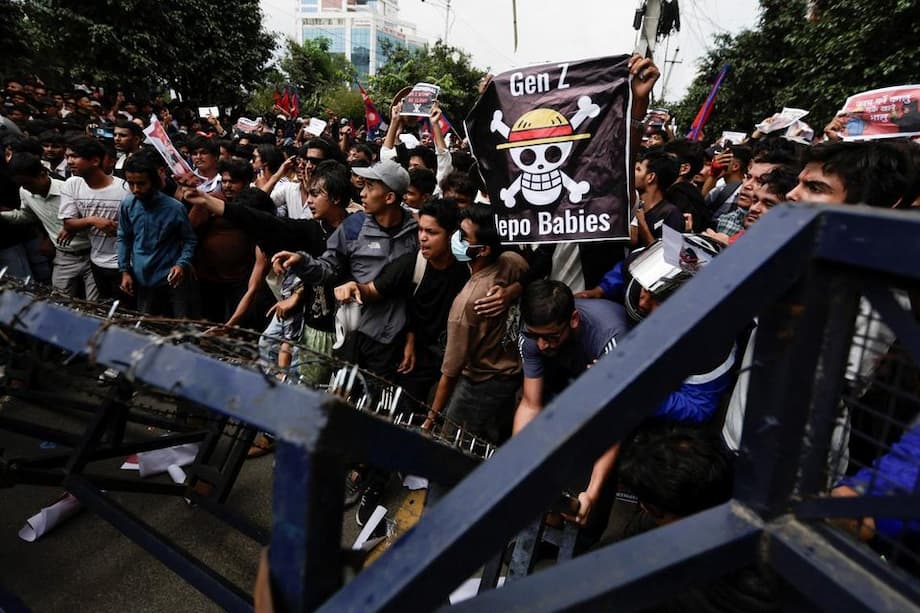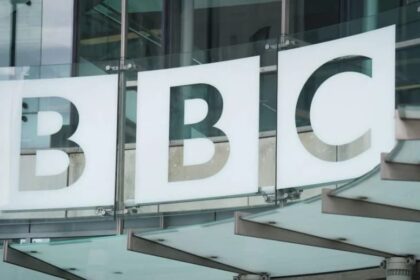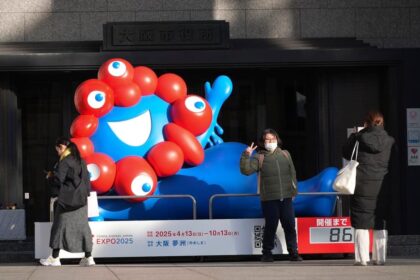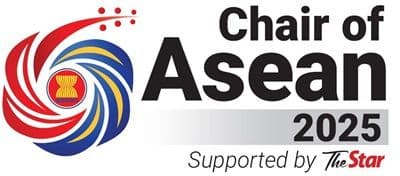A cartoon skull turns into a political signal
When a black flag with a toothy skull wearing a straw hat rose above a crowd in Jakarta in July, many officials did not recognize it. Young Indonesians did. They knew the emblem from anime and saw it as a plain call for freedom. The same symbol, once a fixture on posters and fan shirts, is now a protest banner for a generation that feels shut out of power and tired of corruption, censorship, and heavy handed policing.
The flag is the Jolly Roger of the Straw Hat Pirates from One Piece, a record breaking manga and anime franchise. In the story, the crew chases a dream and resists an authoritarian world government. In recent weeks, the emblem has jumped from fandom into politics. After first appearing in Indonesian demonstrations, it surfaced in anti corruption actions in Nepal and at a campus event in the Philippines. It even showed up in France, where some marchers wore straw hats and carried hand drawn versions.
This spread says a lot about the way Gen Z communicates. They rally around shared images, hashtags, memes, and characters. A cartoon skull is easy to copy, easy to carry, and free from political party baggage. It gives people a common language for dissent while staying inside the bounds of peaceful expression.
Why this flag, and why now
One Piece has become one of the most familiar cultural touchstones among younger viewers in Asia. Since 1997 the manga has sold more than 500 million copies worldwide. The anime, on air since 1999, runs well past 1,100 episodes. A live action series released in 2023 boosted the franchise to a new wave of viewers on major streaming platforms. Many teens and twenty somethings in Indonesia, Nepal, and the Philippines grew up with this story.
There is also a deeper reason the skull works. Historically, pirate flags were meant to scare. One Piece flips that idea. In the series, the Jolly Roger stands for freedom, loyalty among friends, and pursuit of dreams against a rigid system. It is a simple image that compresses big themes. Protesters who feel ignored can raise it and communicate that they want fairness, dignity, and the right to speak without fear.
For a generation fluent in anime references and online humor, the skull in a straw hat is both familiar and unthreatening. It carries meaning across languages. Someone who has never watched an episode still grasps the tone of defiance. That makes it a potent banner in crowded streets and on social media feeds.
Indonesia, the spark
The first wave of real world sightings began with truckers who opposed new limits on overloaded vehicles. Students soon joined. The flag took on new force after clashes in Jakarta on Aug 28 left a 21 year old motorcycle taxi rider dead, crushed by a police tactical vehicle during chaos near demonstrations. Outrage spread fast. Banners were seized in several provinces. Officials condemned displays of the skull next to the national red and white.
Days earlier, President Prabowo Subianto had urged citizens to raise the red and white ahead of Independence Day on Aug 17. In a widely quoted appeal, he said, “Raise the red and white flag wherever you are. Red represents the blood shed for our independence, white represents the purity of our souls.” Some citizens chose a different flag instead. Online shops reported a surge in orders for the straw hat skull as the image went viral.
A debate over flags and patriotism
Indonesian law does not ban fictional flags, but it requires that the national flag fly higher when displayed with other banners. Police in the capital said they would monitor symbols that cut against the spirit of nationalism, a warning that unsettled some fans and free speech advocates. What followed was an argument about loyalty and dissent, with claims from critics that the skull undermines unity and counter claims that it is a creative form of protest.
Indonesia’s state secretary minister, Prasetyo Hadi, sought to walk a line. In a statement, he said the president had no objection to creative expression, then added that the national flag must not be diminished in the process.
“The flag can be a form of creative expression. However, it should not be used to challenge or diminish the significance of the red and white flag. The two should not be placed side by side in a way that invites comparison or conflict,” his office said.
Some lawmakers labeled the skull divisive, with one even suggesting it edges toward treason if it stands next to the red and white. Others in government called the displays a natural part of democratic life. The debate lifted the skull from a fan reference to a national conversation about identity, pride, and the boundaries of protest.
Nepal, a youth revolt with deadly stakes
By early September, the flag crossed the Himalayas. In Kathmandu, mass protests erupted after the government moved to block 26 social media platforms, a step young people saw as censorship. Demonstrations grew into nationwide unrest against graft and nepotism, leaving at least 19 people dead in clashes. The prime minister, K. P. Sharma Oli, resigned as anger swelled and state buildings were set ablaze. Troops moved into key areas, while an interim arrangement was discussed.
Nepal’s Gen Z makes up a large share of the population and has lived through years of unstable coalitions and limited job prospects. In the streets they lifted the straw hat skull beside placards that read “The Time is Now” and “#WakeUpNepal.” Many described the flag as a stand for freedom and a refusal to stay silent in the face of corruption.
Rohan Rai, a 19 year old student in Kathmandu, said the Indonesian images inspired his peers. He described what the skull meant to him and to his friends.
“It represents freedom, loyalty and defiance against injustice. We saw Indonesians use it, and we felt the same thing here. It tells everyone we will not accept corruption and censorship,” he said.
The skull moved across phones and feeds, then into rallies and neighborhood vigils. A piece of entertainment imagery became a shorthand for a generation that feels ignored by elites yet connected to each other across borders.
Philippines and beyond
In the Philippines, students at the University of the Philippines Diliman carried the straw hat skull during an anti corruption run that drew more than 1,000 participants. Online, images of the march spread quickly through fan forums and campus networks. The banner surfaced as the country wrestled with revelations of ghost flood control projects during a season of heavy rains, and as anger grew over displays of wealth by the children of contractors and officials.
Environmental activist Jonila Castro captured the mood with a stinging line that spread beyond activist circles. She framed the contrast between life in flooded neighborhoods and the lifestyles of the well connected.
“While we are sinking in floodwater and mud, they are drowning in money they stole from the people.”
Across the world in France, marchers angry about planned spending cuts and elite politics were photographed with straw hats and hand drawn skull flags. The image works in Paris for the same reasons it works in Jakarta, Manila, and Kathmandu. It signals defiance without a party label and tells a story of common cause across borders.
Why symbols work in the streets
Researchers who study online communities say simple symbols can speed up collective action. A black flag with a jaunty skull is easy to print, paint, or share. It carries a narrative. People who see it recall a crew that stands by each other and refuses to bow to a distant authority. That story can rally strangers around a shared meaning.
Natalie Pang, head of the communications and new media department at the National University of Singapore, said the skull has flipped the historic meaning of pirate flags and now carries a positive charge for many young people.
“While pirate flags were historically used to intimidate and instill fear, One Piece has reimagined them as symbols of freedom, friendship and the pursuit of dreams. Symbols like the Jolly Roger resonate across cultures because they distill complex ideas into visuals that are simple and striking. They can be effective for collective expression and mobilization,” she said.
Edbert Gani Suryahudaya, a researcher at the Centre for Strategic and International Studies in Jakarta, said the flags show how closely people in the region watch each other’s protests, and how pop culture can prime citizens to act.
“International influence in social movements is not new. Almost all large scale social movements involve a spread of ideas across borders. The flag’s growing adoption reflects how Japanese culture is deeply rooted among the young and has inspired them to take action,” he said.
D. Nicky Fahrizal, also of CSIS, argued that today’s resistance often forms outside formal arenas. He pointed to the way digital networks lower the cost of organizing and the way entertainment images carry political meaning.
“The issues are clear. Experiences of social injustice, corruption and state violence are the main driving forces. Strategies of resistance do not always appear in formal arenas. At times, they emerge through the channels of popular culture,” he said.
How the signal spreads
Old protest symbols can be heavy with ideology or tied to one party. The straw hat skull travels light. It is easy to draw on cardboard. It can be printed on a shirt by a small shop. It sits well on a window or a motorbike. Every display reinforces the next. The same image that trends as fan art also functions as a declaration in the street.
Social media accelerates the spread. Images from Jakarta flowed across TikTok, Instagram, and Reddit into Nepal and the Philippines. Young people who already shared tastes in anime and games suddenly shared a protest vocabulary. Sellers reported a wave of orders for the skull flag in the run up to Indonesia’s Independence Day. Fans posted instructions for making hand painted versions. The more authorities tried to restrict displays, the more the skull popped up in new places.
The franchise’s reach also matters. One Piece has sold well over 500 million manga volumes, and its anime catalog has passed 1,100 episodes. The story sits among the most streamed franchises in recent years, boosted by a live action series. That familiarity gave protesters a banner that needed no introduction.
Inside One Piece and the meaning of the straw hat skull
One Piece follows Monkey D. Luffy, a young pirate who forms a crew that values loyalty, freedom, and a shared dream. In the plot, they clash with a powerful world government that controls information and punishes dissent. The skull with a straw hat is the crew’s Jolly Roger, a mark of identity, friendship, and a promise to chase a goal that seems out of reach.
That mix of humor and resolve resonates with real protesters. A fictional symbol becomes a lens for real grievances. When a teen in Kathmandu or a student in Quezon City waves the skull, the gesture blends entertainment with civic resistance. It says something about patriotism too. Many Indonesians who raise the skull say they criticise officials and policies, not the country itself. The flag becomes a way to object, not to reject.
Risks, rights and red lines
The argument over the skull touches sensitive territory. Some Indonesian lawmakers warned that flying the anime flag next to the red and white risks insulting a national symbol. Police seized banners in some provinces and questioned vendors. Others in public office countered that the displays are a legitimate outlet for citizens.
Deputy Home Affairs Minister Bima Arya Sugiarto described the skull as a channel for civic expectations rather than a threat to unity.
“They are a way for people to convey their expectations. Such a form of expression is a natural phenomenon in a democracy,” he said.
Opposition voices echoed that perspective. Deddy Yevri Sitorus from the Democratic Party of Struggle argued that expression through imagery can help prevent clashes.
“This kind of symbolic action is better than street protests that could turn violent,” he said.
Indonesian regulations do set rules for the red and white. If it flies beside other flags, it must be placed higher. There is no rule that bans fictional flags on their own. That fine print is now part of a larger test of how authorities balance national pride with civil liberties. Human rights groups have urged officials to focus on the causes of anger, including corruption and heavy handed policing, rather than on banning symbols. The more the skull is treated like a threat, the more it gains power as a rallying sign.
At a Glance
- The skull and straw hat from One Piece has become a new protest symbol across Indonesia, Nepal, and the Philippines.
- Its rise began in Indonesia with truckers and students, then intensified after a 21 year old rider died during Jakarta unrest on Aug 28.
- Officials condemned displays beside the red and white; police seized banners in several provinces.
- In Nepal, protests after a social media ban left at least 19 dead and led to the prime minister’s resignation.
- Students in the Philippines raised the skull during an anti corruption run at the University of the Philippines Diliman.
- French protesters also carried hand drawn skull flags, showing the image’s global reach.
- Experts say the flag works because it compresses ideas of freedom and loyalty into a simple, shareable image.
- One Piece’s vast reach, with more than 500 million manga sold and over 1,100 anime episodes, helps the skull travel fast.
- Indonesia’s law requires the national flag to fly higher when displayed with others; there is no ban on fictional flags alone.
- Some officials call the skull divisive, while others frame it as healthy expression in a democracy.












